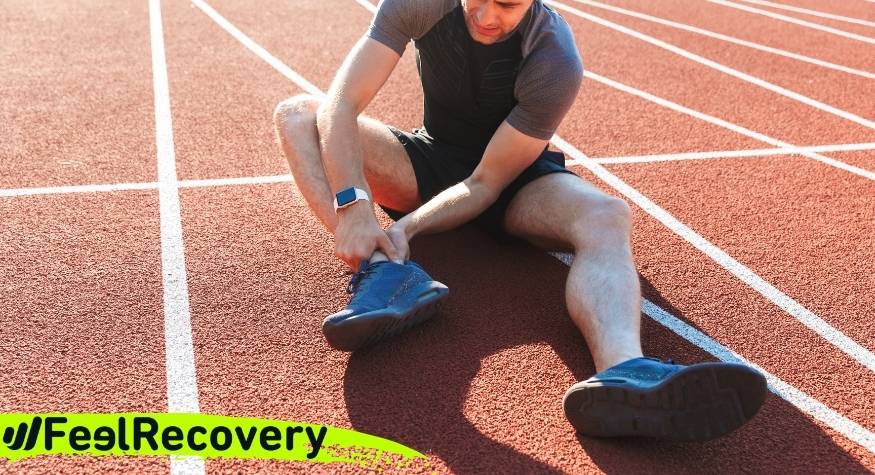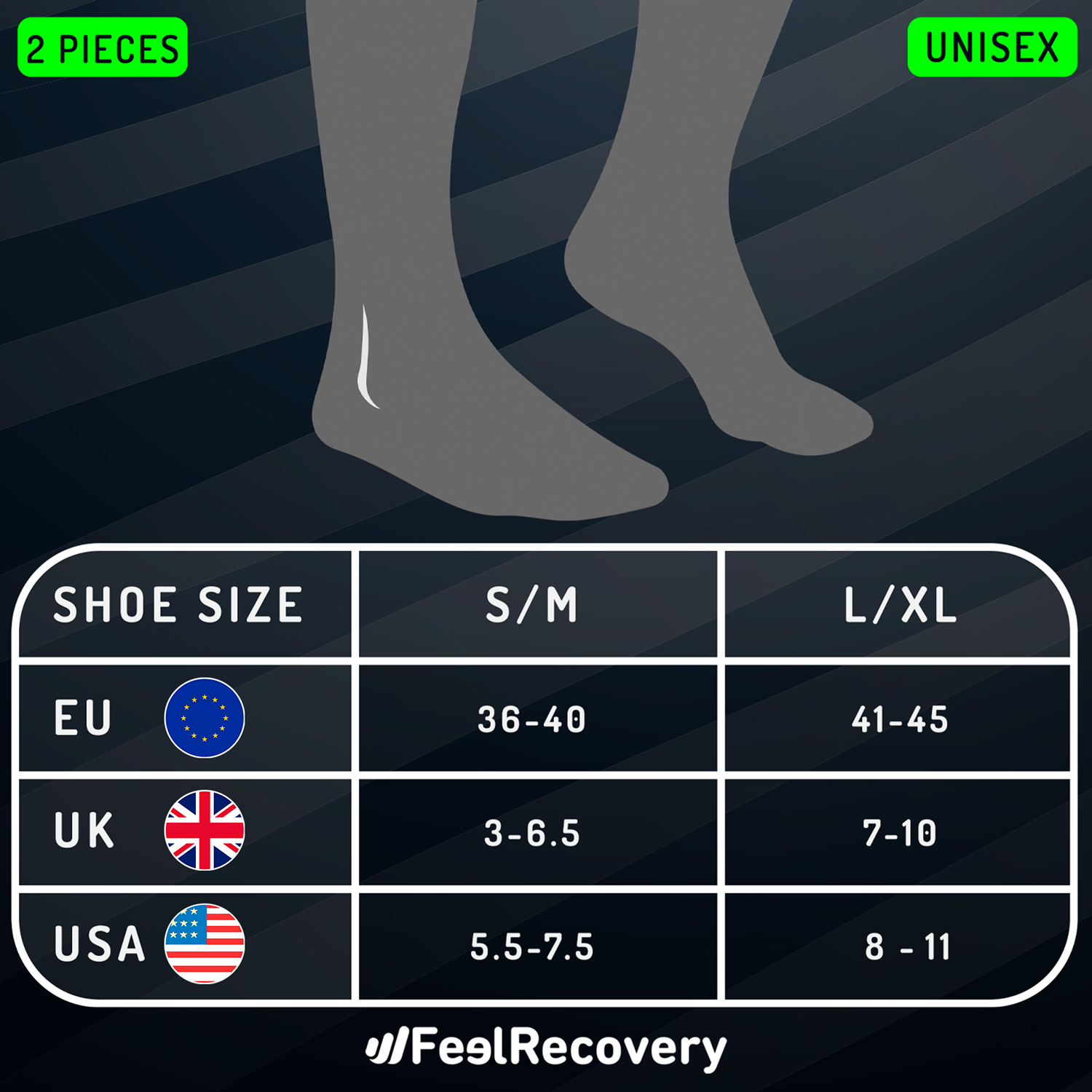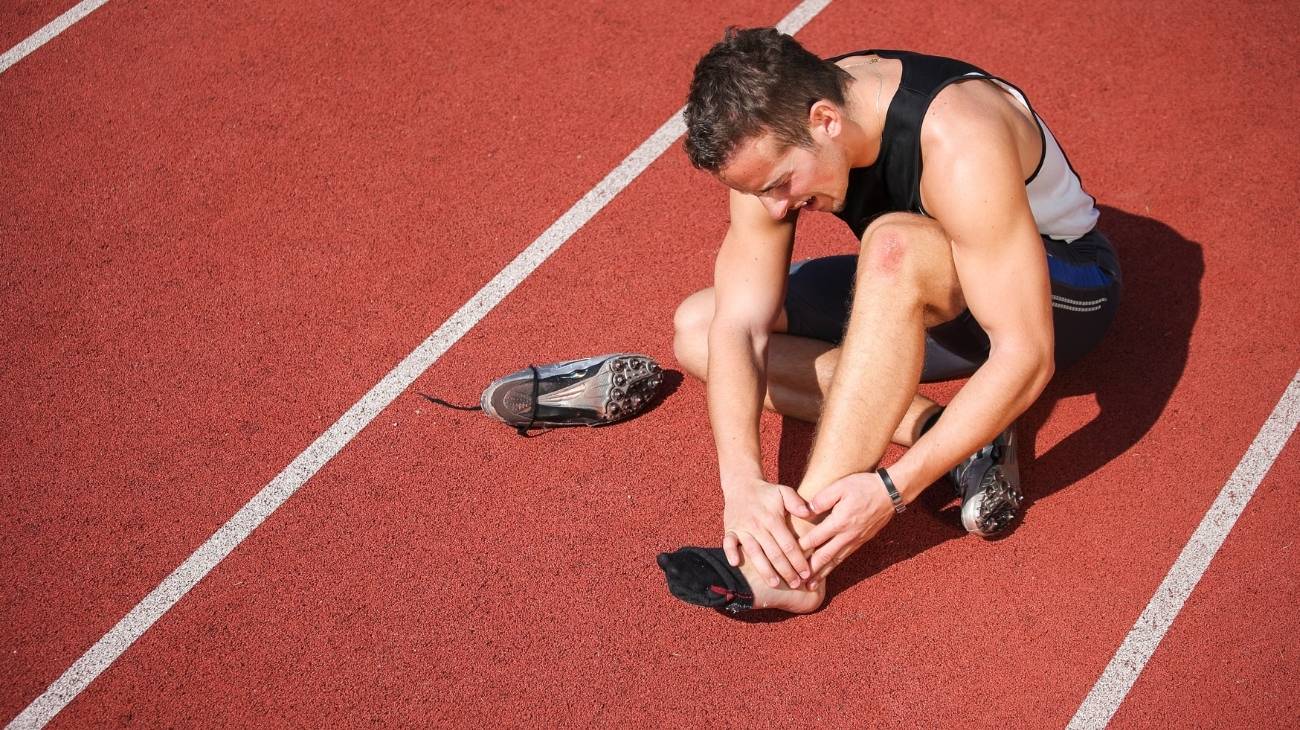Running is a sport with millions of fans all over the world. Among its benefits are that it activates all the muscles in the body, reduces stress, improves your mood and has an incredible anti-depressant effect.
Although it has many advantages, it also has its risks, especially for the ankles, so you should know the main injuries in this joint, so you can prevent some ailments and continue with your passion. In addition, we will teach you how to apply the RICE therapy to treat any ailment in its initial phase.
What are the most common types of ankle injuries when running?
If jogging and running seem easy to you, you're making a big mistake. Running is a very technical sport if you want to save energy and avoid a mid-run withdrawal due to muscle fatigue or an ailment.
Because we want you to be an excellent runner, you need to know about the most common ankle injuries in running:
Sprained ankle
The ankle allows the foot to turn slightly to either side, but when this rotation exceeds an angle of 30° to the outside or inside of the body, the ligaments are overextended and tear. This damage has three degrees or levels of severity, ranging from simple micro-tears to complete ligament tears.
Running on uneven terrain, such as in mountain running, increases the likelihood of pushing the ligaments to the limit until they rupture, causing the ankle to swell, resulting in pain and even bruising. It is difficult to decipher the extent of joint damage, so it is best to see a doctor whenever it occurs, especially if you notice that recovery is not progressing as it should.
Achilles tendonitis
This isan inflammation due to tension overload in the Achilles tendon, which is at the back of the calf and connects the calf to the heel. It is the thickest and strongest tendon in the entire human body, but it supports the entire body weight, and the impact of running strides can inflame it.
In addition to the demands of running, having a more pronounced heel strike or wearing a conventional shoe rather than a running shoe with good cushioning increases the risk of injury to this tendon. When inflamed, there is localised pain and redness of the skin.
Ankle bursitis
Both retrocalcaneal bursitis and subcutaneous calcaneal bursitis are common in running. Both are under the Achilles tendon and the conditions may be associated. Excessive training or shoes that are too tight will cause the bursae to become inflamed and painful.
The bursae are like pads that cushion the bumps and rubbing of the joints when moving and, in the case of running, when running. In the pads there is a synovial fluid that increases in volume in the event of an injury. Sometimes it is necessary to drain fluids to reduce the pain, in other cases, the inflammation subsides with adequate rest and the application of local cold.
Anterior tibialis tendinitis
This type of tendonitis causes pain in the central area of the tibia, which is felt on the inside of the leg. Its origin is due to the type of running you do and the wear and tear on the sole of your shoes, which makes them lose their ability to absorb the impact of running.
In this ailment, the anterior tibial tendon becomes inflamed and there may be a reddening of the skin. At any sign of discomfort you should stop walking as this can lead to micro cracks and in more serious cases, a complete rupture of the tendon tissues.
Fractures
When muscles, tendons and ligaments are fatigued, they do not perform their protective function properly and therefore the stress generated falls on the bones. In the ankle, it is the malleoli that often fracture, either from stress or from a severe sprain during running.
High speed falls are a runner's biggest concern, these falls usually occur during a bad foot strike, the ankle is the joint that will suffer the most in these cases and no matter how strong your leg is, it will most likely fracture. In addition, this injury can also affect the fifth metatarsal of the foot, so when you suspect it, you should always see a doctor for a full and more accurate diagnosis.
Blisters
Although it may seem simple and unimportant, imagine trying to run with a painful and annoying blister on the heel of your foot. This occurs when there is constant friction from footwear on the skin, even though the heel is protected by a sock, sometimes suffer from this ailment.
There are no secrets to avoiding this skin injury, just make sure you don't wear the same pair of socks all the time and don't put them on with a wet foot. If you have new shoes, avoid wearing them for the first time on the day of the competition, first train as much as possible with them so that they adapt to your foot.
Best products for ankle injury recovery in running
Bestseller
-
2 Ankle Compression Sleeve (Black/Gray)
$19.95 -
2 Ankle Compression Sleeve (Green/Navy)
$19.95 -
2 Ankle Compression Sleeve (Pink/Bordeaux)
$19.95 -
Ice Pack for Foot - Cold Therapy Socks (Black)
$24.95 -
Ice Pack for Foot - Cold Therapy Socks (Green)
$24.95 -
Ice Pack for Foot - Cold Therapy Socks (Pink)
$24.95 -
Microwavable Heated Slippers (Hearts)
$24.95 -
Microwavable Heated Slippers (Oxford)
$24.95 -
Microwavable Heated Slippers (Sport)
$24.95 -
Microwaveable Heating Pad for Pain Relief (Hearts)
$19.95 -
Microwaveable Heating Pad for Pain Relief (Oxford)
$19.95 -
Microwaveable Heating Pad for Pain Relief (Sport)
$19.95 -
Sport Compression Socks (1 Pair) (Black/Gray)
$19.95 -
Sport Compression Socks (1 Pair) (Green/Navy)
$19.95 -
Sport Compression Socks (1 Pair) (Pink/Bordeaux)
$19.95
How to apply the RICE therapy to treat ankle injuries in runners and athletes?
Have you ever wondered what to do if you have an ankle injury while running? When you know that the injury is a soft tissue injury, it is best to apply the PRICE therapy, which used to be better known as RICE. It is a series of steps to follow to reduce pain, swelling and bruising in the affected area:
- Protection: Use an initial bandage to cover the ankle and immediately stop putting your foot on the ground. Try to stay seated while more people come to your aid.
- Rest: Depending on the severity of the condition, rest may last 48-72 hours. Until you have a full diagnosis, it is best to keep your foot off the ground.
- Ice: Use a cold gel pack on the skin from the moment of injury. This will reduce the swelling and relieve the severe pain you are likely to feel, especially if it is a sprain.
- Compression: Use a compression ankle brace to put light pressure on the joint. It will help reduce pain, keep the injury at a better temperature, reduce bruising and prevent swelling from progressing.
- Elevation: Raise your leg on a pillow above the level of your heart and allow gravity to contribute to an improvement in the injury. The blood supply is lowered, which helps the anti-inflammatory process.
References
- Tenforde, A. S., Yin, A., & Hunt, K. J. (2016). Foot and ankle injuries in runners. Physical Medicine and Rehabilitation Clinics, 27(1), 121-137. https://www.pmr.theclinics.com/article/S1047-9651(15)00071-6/fulltext
- Garrick, J. G., & Requa, R. K. (1988). The epidemiology of foot and ankle injuries in sports. Clinics in sports medicine, 7(1), 29-36. https://www.sciencedirect.com/science/article/abs/pii/S027859192030956X
- Reber, L., Perry, J., & Pink, M. (1993). Muscular control of the ankle in running. The American journal of sports medicine, 21(6), 805-810. https://journals.sagepub.com/doi/abs/10.1177/036354659302100608
- Barr, K. P., & Harrast, M. A. (2005). Evidence-based treatment of foot and ankle injuries in runners. Physical Medicine and Rehabilitation Clinics, 16(3), 779-799. https://www.pmr.theclinics.com/article/S1047-9651(05)00018-5/fulltext
- Kennedy, J. G., Knowles, B., Dolan, M., & Bohne, W. (2005). Foot and ankle injuries in the adolescent runner. Current opinion in pediatrics, 17(1), 34-42. https://journals.lww.com/co-pediatrics/Abstract/2005/02000/Foot_and_ankle_injuries_in_the_adolescent_runner.9.aspx
- Fields, K. B., Sykes, J. C., Walker, K. M., & Jackson, J. C. (2010). Prevention of running injuries. Current sports medicine reports, 9(3), 176-182. https://journals.lww.com/acsm-csmr/Fulltext/2010/05000/Prevention_of_Running_Injuries.00014.aspx
- Van Mechelen, W. (1992). Running injuries: a review of the epidemiological literature. Sports medicine, 14, 320-335. https://link.springer.com/article/10.2165/00007256-199214050-00004
- Messier, S. P., & Pittala, K. A. (1988). Etiologic factors associated with selected running injuries. Medicine and science in sports and exercise, 20(5), 501-505. https://europepmc.org/article/med/3193867
- Lysholm, J., & Wiklander, J. (1987). Injuries in runners. The American journal of sports medicine, 15(2), 168-171. https://journals.sagepub.com/doi/abs/10.1177/036354658701500213
- Hamill, J., van Emmerik, R. E., Heiderscheit, B. C., & Li, L. (1999). A dynamical systems approach to lower extremity running injuries. Clinical biomechanics, 14(5), 297-308. https://www.sciencedirect.com/science/article/abs/pii/S0268003398900924











































